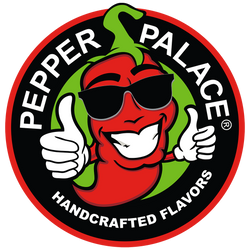Find a Store
Salsa Vs. Ketchup: The Ultimate Condiment Throwdown
We’d like to take a moment to openly mock 16th century Europeans, who thought the tomato was deadly. The “poison apple,” they said. “It will kill you,” they said. Ha, ha! A life without tomatoes is a fate worse than death, we say! Hats off to the brave souls who knew this juicy, boldly-colored fruit would change the fate of the human diet. They ate it, they survived, and here we are today, happy as we can be in a world steeped in tomato-based cuisines. Yet, even now, the tomato creates a controversy we need to address: salsa vs. ketchup, which is better? Let’s settle The Great Condiment Debate with a friendly throwdown.
What’s more popular, salsa or ketchup?
The answer to this question depends on who you’re asking. Ever since 1992, salsa has consistently outsold ketchup every year in the United States. That doesn’t mean ketchup is unpopular, though! Research shows that Americans consume 10 billion ounces of ketchup each year—about three regular-sized bottles per person—which tells us that ketchup is pretty darn popular. Let’s break it down:
.
- Is salsa the number 1 condiment? While salsa might be the number one condiment in our hearts, it’s not the number one condiment in America. That crown goes to mayonnaise, believe it or not.
- Does salsa outsell ketchup? Technically speaking, yes: salsa outsells ketchup every year in terms of total dollars spent on each condiment. But, Americans buy more pounds of ketchup. Salsa makes more profit, but people buy larger quantities of ketchup. In other words, salsa outperforms ketchup on the bottom line, but ketchup outperforms salsa in the grocery line. Recent data reported from Instacart shows that American consumers order way more ketchup than they do salsa. One jar of salsa is more expensive than one bottle of ketchup, which may help explain why salsa makes more money each year.
So, in the end, ketchup wins the popularity contest but salsa wins peoples’ wallets. Do you know what would be amazing? If someone figured out how to blend chilis into ketchup for a mind-blowing new condiment. Oh, wait. We did. Check out our line of hot chili pepper ketchups.
Is salsa or ketchup better for you?
Hands down, salsa is way better for you than ketchup. While salsa is a mashup of fresh ingredients, like tomatoes, peppers, and garlic, ketchup is typically flavored with added sugars, oils, high fructose corn syrup, and other not-so-healthy ingredients. In recent years, ketchup makers developed lower-sugar and organic options to satisfy consumers’ desires for healthy condiments. But, if you’re looking for a tried-and-true option that is healthy, pick salsa.
When ketchup is better than salsa
While we love to put salsa on just about everything we eat, there are certain situations where ketchup is a better choice, such as:
- French fries
- DIY BBQ sauce
- Onion rings
- Hash browns (Unless you’re making hash brown nachos, in which case Salsa all the way)
- Fried shrimp
When salsa is better than ketchup
Obvs we’re going to bypass anything from the Mexican or Tex-Mex menu since we’re guessing you already know you’re putting salsa and not ketchup on your nachos and enchiladas. For a more universal menu, salsa makes these foods tastier and healthier:
- Sandwich wraps
- Chicken breasts
- Fried fish or as a simmer sauce for fish
- Mac’n’cheese
- Bloody Marys
Tomatoes for the win
We’d like to point out that today, one of the largest global markets for ketchup is the UK—the descendants of those same Europeans who recoiled in horror at the thought of putting a tomato in their mouths. Whether you puree the tomatoes with salt, sugar, vinegar, and spices, or chop them up with jalapenos and garlic, these luscious fruits transform into condiments we can’t live without.
